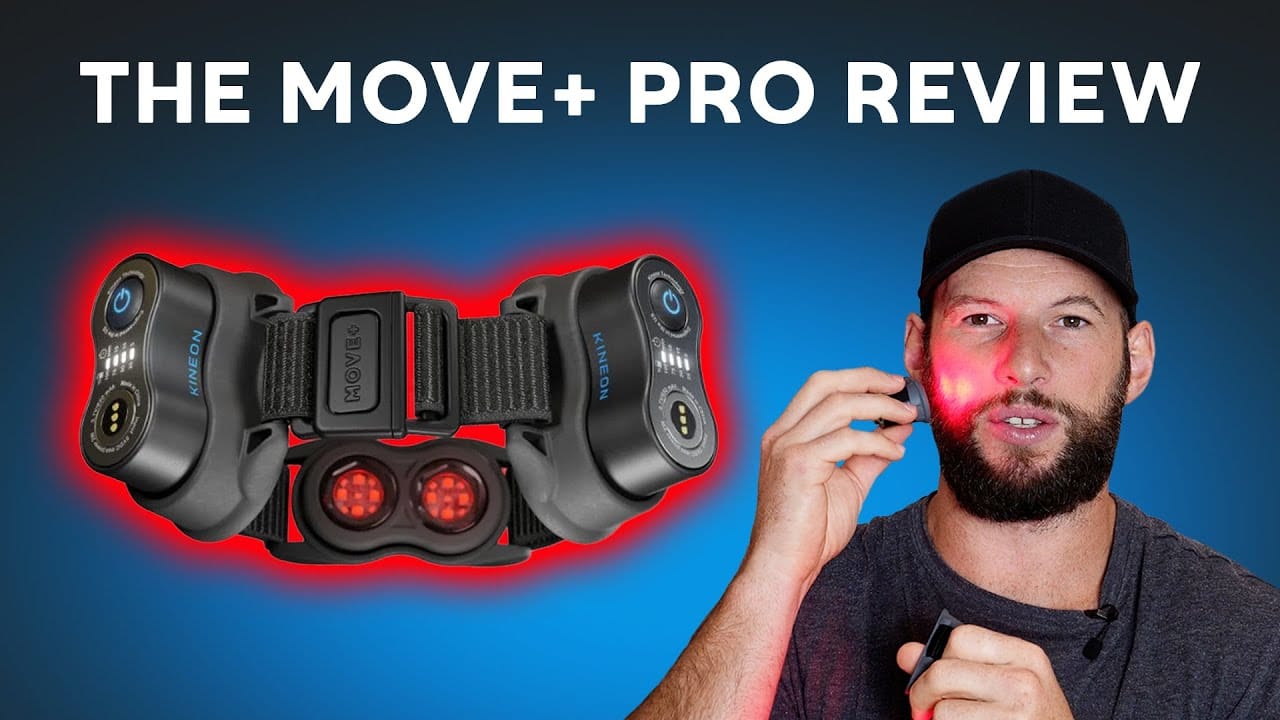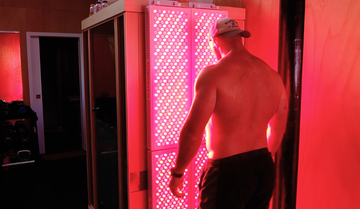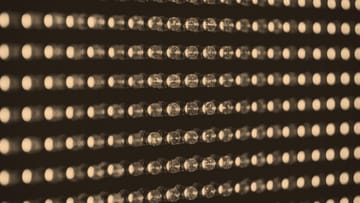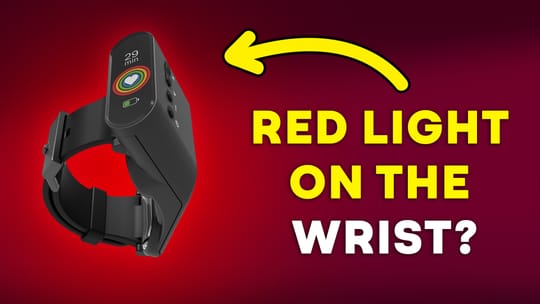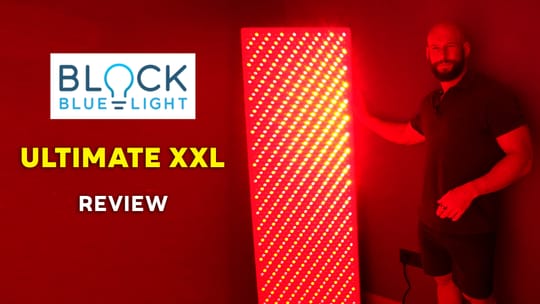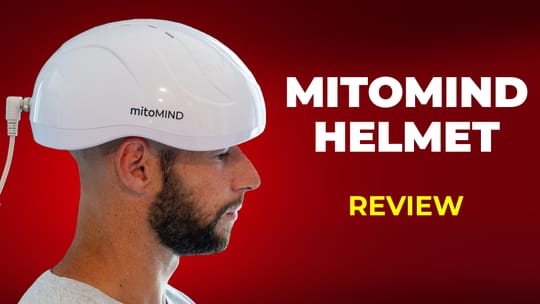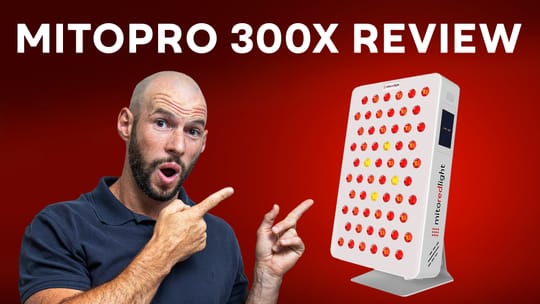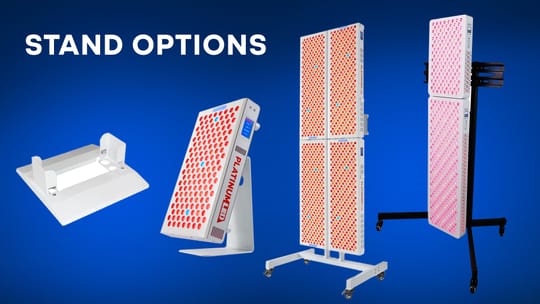The MOVE+ Pro by Kineon is a rather novel red light therapy device designed by a group of very smart individuals who all suffered from knee problems.
As you can see, it's not your typical red light therapy LED array. In fact, it's different in many ways. Do these differences make it better? Or is this just a unique way to deliver red light therapy where you need it? Let's find out.
Okay, it's currently on a strap or a harness. It is designed to go around your joint such as your knee or your elbow.

Though you can individually pop them out and use them to treat wherever you want: that sore tooth, that wound, your face, or wherever. Though you should probably use protective glasses if you're using this near your face.
Move+ LEDs & Lasers
Why do you need protective glasses when using it near your face? Well, not only does it have some pretty bright LEDs, it's also got lasers. Yeah... pretty cool huh?
So it has your typical 660 nanometer (nm) and 670nm red light, and it's also got near infrared lasers in here. It's something I haven't seen before in a red light therapy device. I've read about them, but I've never used one. So, I was pretty stoked to get my hands on this and have a play with it.
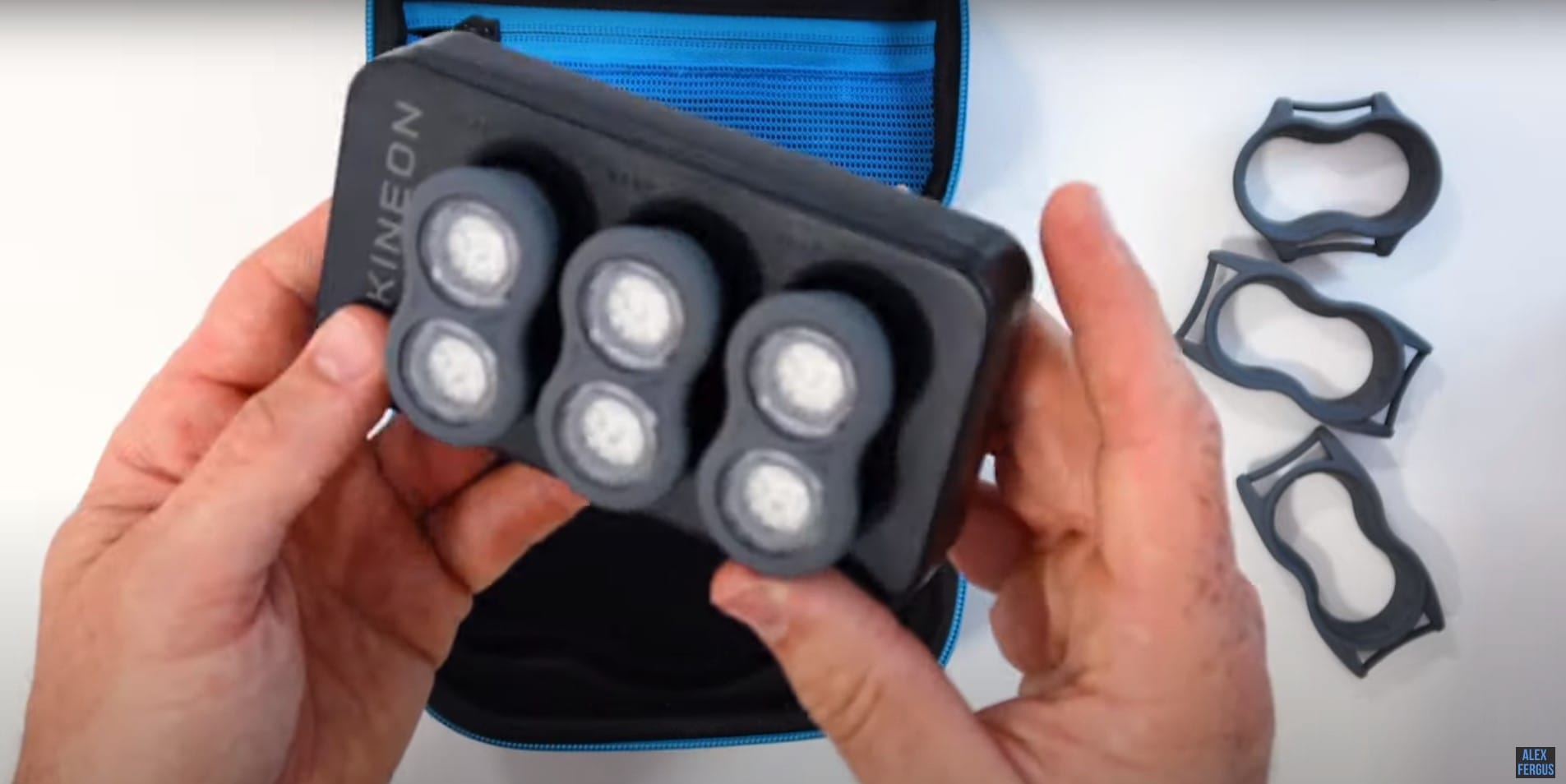
Now as you can see, it is portable and battery powered. You get three of these little modular pods. You can use them as small handheld devices, or you clip them in to the supplied bracket on the harness strap.
You also get this charging dock. You can pop the pods into the dock for easy charging. You get about 24 10-minute sessions out of one charge, so that's pretty good.
The light is pulsed, and I believe the near and the red light is pulsed at different intensities or different rates which did make testing the power a little bit difficult.
As you'll see so it also comes with a rather neat carry pack which allows you to put everything in a secure case and you can even charge the pods while they are stored in the case as well which is kind of cool.
Wavelength & Power Testing
Time to fire up the spectrometer and have a look at what's going on here. So when you look at the screen, you'll notice straight away that straight up and down near infrared reading that is the result of the lasers. You're seeing a peak of about 805nm which is really cool.

There's a lot of evidence showing that the 805nm to 810nm light is extremely beneficial especially for things like joint health and muscle recovery. You can tell straight away that these guys know what they're doing by including that in there.
Then you've also got your slightly wider typical LED-shaped peak from the red light. This is peaking around 665nm which is going to be good for mitochondrial health. Of course, there's a heap of evidence on the benefits of 660nm light as well.
When it comes to measuring the power, it was a bit tricky. I didn't bother measuring at six inches because you're not really going to be using this at six inches. Plus, it was really hard getting a reading. I think the pulsing and given the size of it, my numbers wouldn't have been very accurate at 6 inches away.

So, I only tested right at the source which is probably how you're going to use it if it is on a joint especially given the size of this. There's obviously no cooling. It's just battery powered, so that was neat and a little bit unusual compared to testing panels.
I hope the flickering lights especially different flickering rates don't throw off my measurements. It can be tricky measuring that type of power output, but it looks like the power is more than adequate especially as you're using this right on the body.
Dosing Protocols & Price
What's neat is you can change the treatment time on this to be either 5, 10, or 15 minutes. There's no timer or anything like that. You just set it, start it up, and then it runs for that time, and turns itself off. It's rather simple.
I have always said I like having timers. Of course, if you're using this with the strap on your joint then it may not matter as much since it automatically shuts off after the set time.
I also tested the EMF and sound levels. There was no EMF coming from this which is great and sort of expected given it's battery powered. There's also no sound other than the beep when you turn it on and off.
It's free shipping in America. Internationally, expect to pay about $45 or upwards and finally it has a one year warranty.
My Likes
So, what do I like about this? Well first up, it's got lasers. I mean that's cool right? I think after I've tested a few more products with lasers I won't be as excited about them as I am right now.
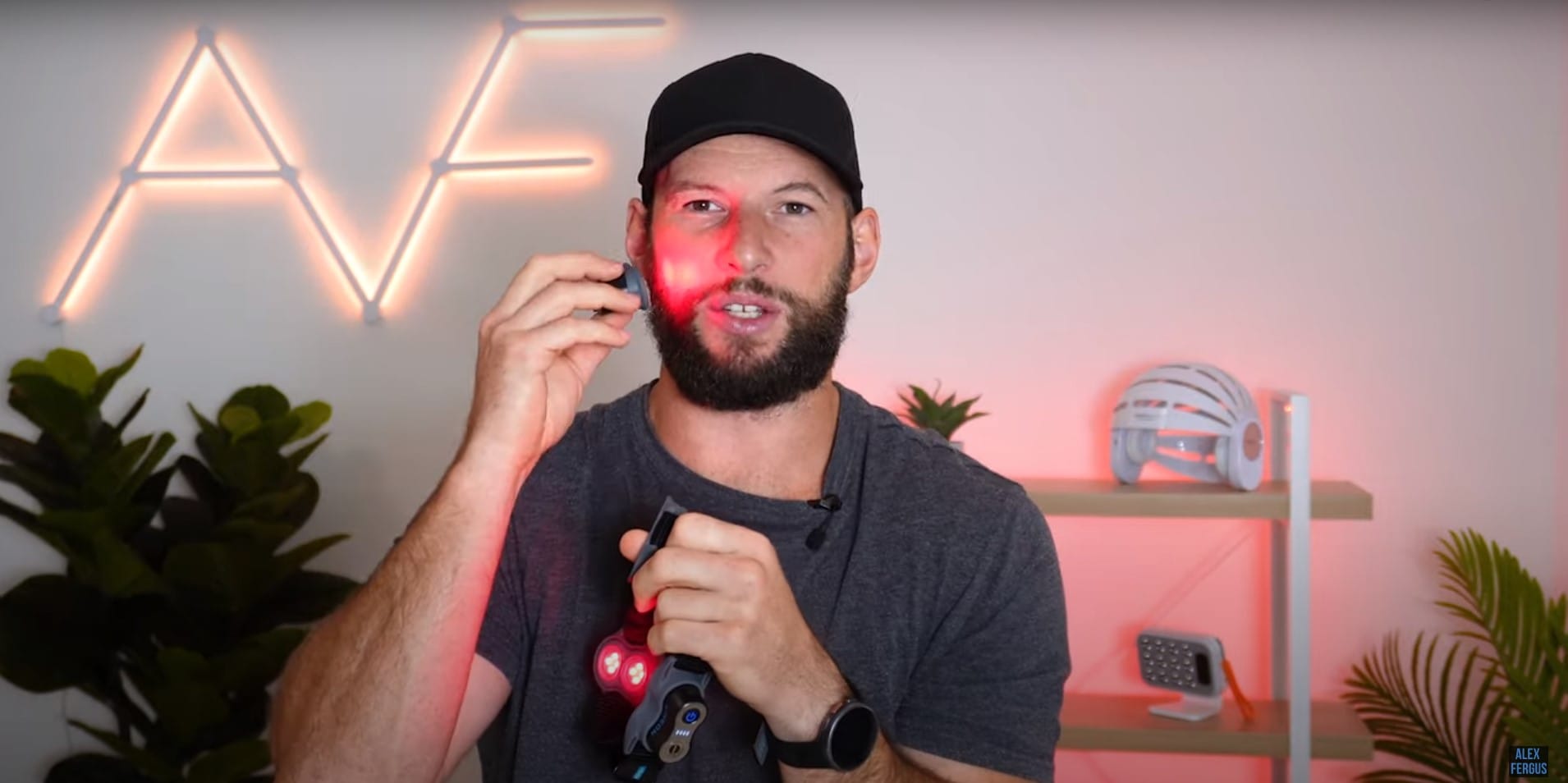
Of course, they're near infrared lasers, so it's not like you're shining it at the wall and your cat's running around after them since the light is not in the visible spectrum. I'm keen to learn more about lasers compared to LEDs.
Secondly, I'm very impressed with the team behind this product. This isn't just someone who's read about red light therapy then went out and got some products off Alibaba put their sticker on it and set up a red light therapy business.
These guys know this stuff inside out. I have spoken to Forrest Smith the CEO and founder of the company. I'll put a link to that video. So you know you're buying something that has been well-researched and well-designed. if you want to check it out. Honestly, I felt like I couldn't keep up with his depth of knowledge about his product. He's also very passionate about this technology.
So you know you're buying something that has been well-researched and well-designed. Speaking of design, it is solidly built and easy to use. The charging dock works well. It's magnetic. All the lights work easily. It all fits well. The button on the back is easy to press. Everything feels really good.
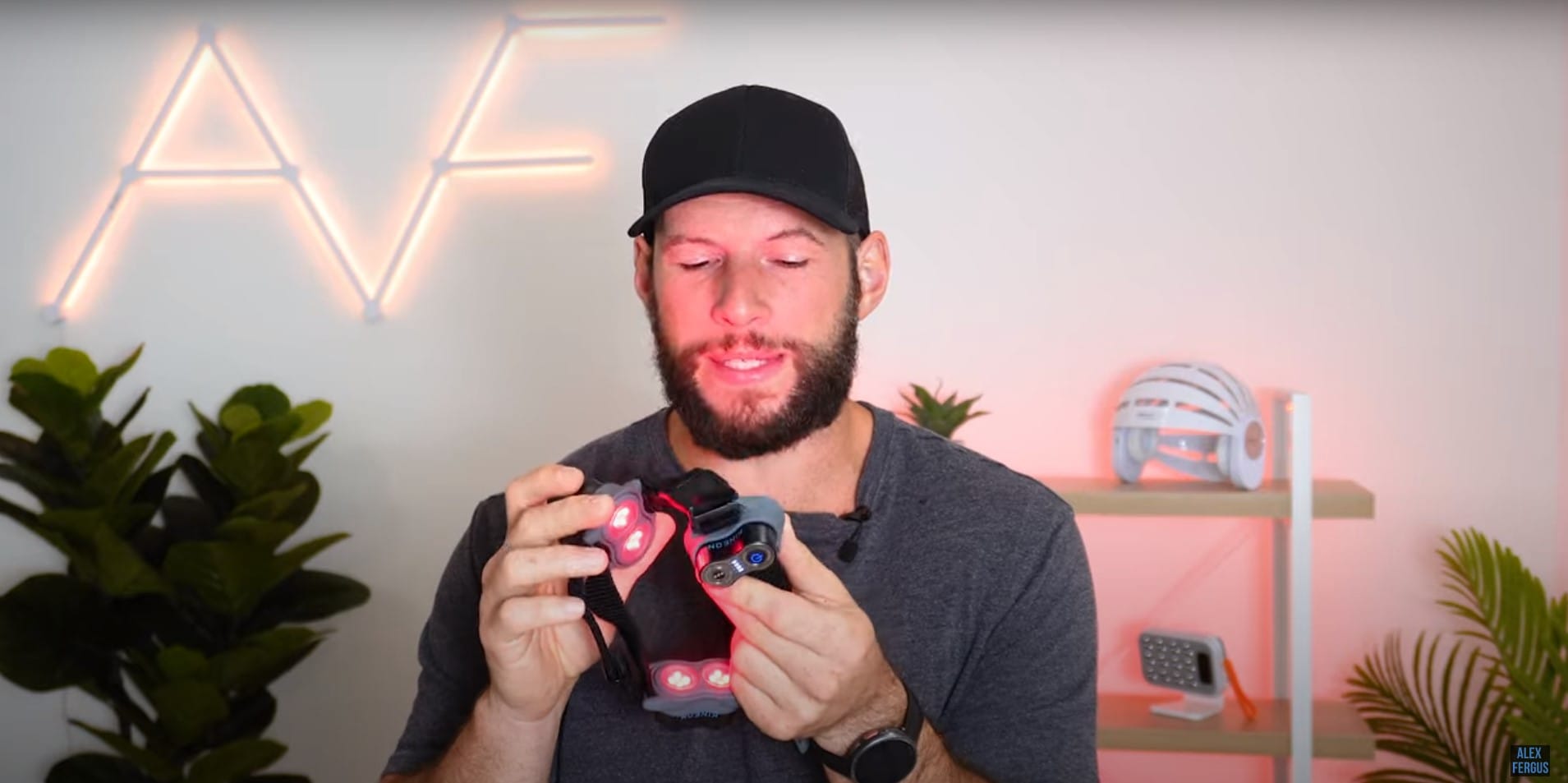
I also like the fact that it's got that 805nm and 810nm near infrared light in it. Those are wavelengths we don't see in many panels. I think because it's slightly more expensive from an LED point of view.
As I've discovered over the last few months, it's potentially one of the best near infrared wavelengths out there especially when it comes to things such as joint health, muscle recovery, and even muscle performance.
Of course, this product is great for joints. That's exactly why it was designed. Joint issues is what it was made to improve. If you have knee problems, it's going to be amazing. The strap is designed so the lights are positioned at various angles coming into the joint.
You could also use it on your elbow, shoulder, or maybe even your ankle. Of course, you could strap this around the muscular part as well such as your quad, calf, forearm, or bicep if you've torn those muscles.
If you want to use it around your torso, you can actually get a larger strap to use it that way which is also quite small and portable.
I've actually been using the little pods individually for a certain areas. For instance, you could target that sore tooth. Or you could use it if you had little sore spot in your mouth from biting your lip or cheek or even a cold sore. You could spot treat wherever you may have an issue because it is small enough to target those areas.
My Dislikes
I think that would be a great addition to have the option of turning this into a handheld device, so you could then benefit from those lasers and spot treat problematic areas or potentially use it prior to your workout and load up on the quads, lats, and biceps before going into your workout.
Though they're easy to use, it is a bit annoying having to turn all three on individually. If you're using them in the strap, it would be nice to just have one master switch to turn them on or off. Instead, you need to turn each one on individually.
If they are set to different time lengths, then one's going to turn off before the other. It's not a deal breaker. It's just slightly annoying. Maybe in a future version, we'll see they'll be able to link through Bluetooth. Or perhaps when they're in the strap, they're all wired together and in sync with each other.
Now, I've spoken to Forest Smith, the CEO, about this in the interview. I highly recommend checking it out. He was aware of this, and he said it's something they may address in the future. So hopefully someday, you'll be able to get a different docking device so that you could use it to move around your body and muscles.
I also don't like that you can't change or disable the pulsing. We see this option with panels where you can go through and customize your pulsing rate for those who want the option to tap into the benefits of pulsing.

Others may want to just disable pulsing altogether, but you can't do that here. It may be from a power and thermal regulation point of view. But it would have been nice to have that option to disable pulsing.
Then finally we have the straps. Yes, I can see how it's been designed and will work well on a knee. But it is rather difficult using this on other joints such as your elbow.
If you want to use it on your shoulder, you're literally just throwing it over the shoulder. I think that part could be improved. And I'm sure there will probably be improved versions in the future. It works as is, but those are potential opportunities to make it even better.
Overall then, what do I think of this? Well, of course it is quite a novel product. It's very different to the panels that I'm accustomed to testing. It's got some nice features in it such as the lasers that panels typically don't have.
I really need to emphasize how much time and research this company has invested in their product. That is a big selling point because when you buy one of these you're paying for their research, insights, and knowledge of what works.
I think that is showing through when you look at some of the testimonials from people who have been using this especially people that have had knee problems. The wavelengths, the power output, the positioning in the strap, it all works well as designed.
Who Should Buy?
So then who is this product for? Well, the first is if you suffer from knee problems because this was specifically designed as a knee device. It's just that red light therapy works wonders across the body, so people are using it in many different areas all over their bodies.
But if you do have knee problems, then you should consider this because with the addition of the strap, you could wear this on your drive home from training. And you could wear it in bed. You could also wear it while watching TV. And you can even be walking around while using it! You don't have to be stuck next to a panel. You could even use it as you're warming up right before game day.
Secondly, if you're someone who's looking for a high-powered well-designed portable unit, then you may also want to consider this. You probably won't use the strap much. Most likely, you will end up using these pods individually.

Being able to spot treat problematic areas or wounds with these three small devices that have the option to clip into straps is quite handy. Since the battery lasts in 24 sessions, if you're going away for a night, you don't even need to pack the whole travel case. You could just pack the pods on their own, and it's not going to take up too much space.
The thing to be wary of though is that you can't use it when it's charging in this docking device. You may find that holding all three of them together is a little bit awkward. So really, you may end up only using two which is a slight bother.
Finally, if you're someone who just loves lasers, then you might want to buy this as well for the bragging rights and wow factor.
Comparison To Competition
How does this compare to other products in particular LED panel arrays? Even though you're getting a well-designed, well-built, high-powered, feature-packed product for $450, the total treatment area is rather small.
For comparison with a similar-sized device, Mito Mobile Flex is handheld and battery-powered. It's has a lot more LEDs and puts out more total power.
But it's only got the 660nm and 850nm light. Missing out on the 805 and 810 nanometer light is a bit of a bummer. Of course, it's not specifically designed for just joints.

If you weren't treating say an elbow or a knee, you're going to have to move this around to target all areas. The larger treatment size and having more power means you're not going to be spending quite as much time moving this one around, but it's something to think about.
Next, we have the MitoADAPT Min. As you can see, it's a much larger device. Plus, you've got your beneficial 810nm light in this.

Of course it's not battery powered. It's not portable. You're only going to be able to use this at home.
But if you're wanting to treat a knee, with the amount of power that this is putting out maybe it would take you five minutes on one side and five minutes on the other and then job done. Of course, you can then use your MitoADAPT Min for other areas of your body such as your back or even your face for the collagen benefits or what have you.
The third product to look at is the Thor laser devices which are currently used in clinics and are often used for things such as joint problems. Those work incredibly well.

The downside though is the price costing tens of thousands of dollars because it's marketed more towards the professionals. But if you are watching this video and you were considering this product for yourself or your clinic, then Thor laser products are something you may want to consider.
Overall though, hopefully I've helped shed more light on this product (pun intended). In the meantime, I highly recommend checking out this video of my interview with Forest Smith the founder and CEO of Kineon.
If you want to learn more about MOVE+ Pro, or even if you just want to learn more about red light therapy in general, you're going to love this video, so check it out. Otherwise, leave any questions or comments below.
This Article's Products With Benefits:
- Move+ Pro from Kineon use this link and code AFERGUSMOVE+ for 10% off
- Mito Mobile Flex or MitoADAPT Min - The discount will automatically apply at checkout if you use that link.
- I don't have a code or link for discounts on Thor laser products - but you can mention Alex Fergus sent you.
Extra! Extra! Read All About It!
✅ Red Light Therapy: What’s The Ideal Distance from Skin?
✅ Red Light Therapy for Arthritis: The Complete Guide
✅ How To Use Red Light Therapy At Home: Expert Tips
✅ 36 Powerful Red Light Therapy Benefits
Be In The Know With These YouTube Videos
✅ PlatinumLED BioMax 300 Review: 6 Wavelengths & More!
✅ Kineon CEO Forrest Smith Interview: Revolutionary Tech?
✅ Weber Medical Laser Watch: REVOLUTIONARY Endolight®?

